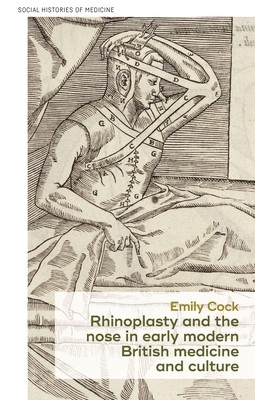
- We will send in 10–14 business days.
- Author: Emily Cock
- Publisher: Manchester University Press
- ISBN-10: 152613716X
- ISBN-13: 9781526137166
- Format: 13.5 x 21.8 x 3.1 cm, hardcover
- Language: English
- SAVE -10% with code: EXTRA
Rhinoplasty and the Nose in Early Modern British Medicine and Culture (e-book) (used book) | bookbook.eu
Reviews
Description
This book explores experiences with and responses to the surgical reconstruction of the nose in seventeenth- and eighteenth-century Britain, examining the concerns and possibilities raised by the idea of 'nose transplants' in this period.
Challenging histories of plastic surgery that posit a complete disappearance of pioneering Italian plastic surgeon Gaspare Tagliacozzi's reconstructive operation after his death in 1599, the book traces the actual extent of this knowledge within the medical community in order to uncover why such a procedure was anathema to early modern British culture. Medical knowledge of Tagliacozzi's grafting technique was overtaken by a spurious story that the transplanted nose would be constructed from flesh purchased from a social inferior that dropped off when the donor died. The volume explores this popular, widely related narrative in detail to examine its role in the procedure's stigmatisation, its engagement with the doctrine of medical sympathy, and its unique attempt to commoditise living human flesh.
Utilising medical research and book histories alongside literary criticism, Rhinoplasty and the nose in early modern British medicine and culture historicises key modern questions about the commodification and limits of the human body, the impact of popular culture on medical practice, and the ethical connotations of bodily modification as response to stigma.
EXTRA 10 % discount with code: EXTRA
The promotion ends in 18d.12:55:17
The discount code is valid when purchasing from 10 €. Discounts do not stack.
- Author: Emily Cock
- Publisher: Manchester University Press
- ISBN-10: 152613716X
- ISBN-13: 9781526137166
- Format: 13.5 x 21.8 x 3.1 cm, hardcover
- Language: English English
This book explores experiences with and responses to the surgical reconstruction of the nose in seventeenth- and eighteenth-century Britain, examining the concerns and possibilities raised by the idea of 'nose transplants' in this period.
Challenging histories of plastic surgery that posit a complete disappearance of pioneering Italian plastic surgeon Gaspare Tagliacozzi's reconstructive operation after his death in 1599, the book traces the actual extent of this knowledge within the medical community in order to uncover why such a procedure was anathema to early modern British culture. Medical knowledge of Tagliacozzi's grafting technique was overtaken by a spurious story that the transplanted nose would be constructed from flesh purchased from a social inferior that dropped off when the donor died. The volume explores this popular, widely related narrative in detail to examine its role in the procedure's stigmatisation, its engagement with the doctrine of medical sympathy, and its unique attempt to commoditise living human flesh.
Utilising medical research and book histories alongside literary criticism, Rhinoplasty and the nose in early modern British medicine and culture historicises key modern questions about the commodification and limits of the human body, the impact of popular culture on medical practice, and the ethical connotations of bodily modification as response to stigma.


Reviews